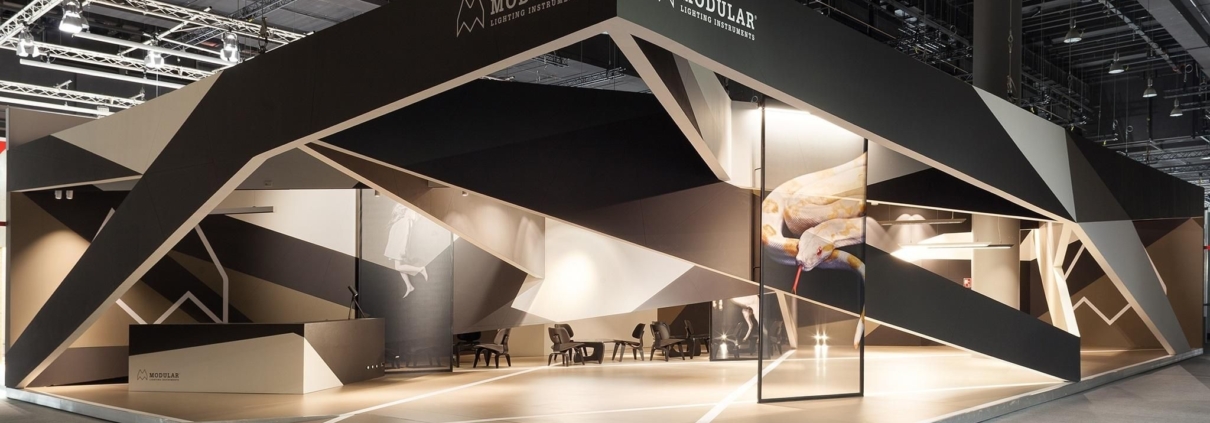Difference Between Modular Exhibition Stands and Sustainable Exhibition Stands
Modular Exhibition Stands:
A crucial element in promoting brands, products, and services is the exhibition stand, which serves as the focal point for engaging visitors and showcasing a company’s offerings. Two common categories of stands are Modular Exhibition Stands and Sustainable Exhibition Stands. While both serve the primary function of exhibiting, they differ in design philosophy, materials used, and overall impact.
What Are Modular Exhibition Stands?
Modular exhibition stands are designed using pre-manufactured components or modules that can be easily assembled, reconfigured, and reused for multiple events. These stands are versatile and adaptable, enabling businesses to tailor layouts and designs to various exhibition spaces and requirements.
Key Features of Modular Exhibition Stands:
Flexibility:
Modules can be combined in various ways to create different sizes and shapes, making them suitable for exhibitions of all scales.
Reusability:
Since components can be disassembled and reused, modular stands are cost-effective in the long run.
Ease of Transport and Assembly:
Modular stands are designed for quick setup and dismantling, which saves time and labour costs.
Customization:
Businesses can brand modular stands with graphics, lighting, and digital displays to reflect their identity.
Durability:
Many modular stands use lightweight yet sturdy materials such as aluminium frames and composite panels.
Key Role of Modular Exhibition Stands:
The primary role of modular stands is to provide a flexible, practical, and cost-efficient solution for companies that attend multiple trade shows or exhibitions annually. Due to their adaptability, modular stands can be tailored to various events, ensuring a consistent brand presence while reducing the need to build new stands from scratch.
What Are Sustainable Exhibition Stands?
Sustainable exhibition stands are designed with environmental responsibility as a priority. These stands use eco-friendly materials, sustainable manufacturing processes, and design strategies aimed at minimising waste and reducing carbon footprints.
Key Features of Sustainable Exhibition Stands:
Eco-Friendly Materials:
Use of recyclable, biodegradable, or renewable materials such as bamboo, recycled wood, organic fabrics, or recycled plastics.
Energy Efficiency:
Incorporation of LED lighting and energy-saving technologies to reduce power consumption.
Minimal Waste:
Designed to be reusable, easily disassembled, or recycled after use to avoid landfill waste.
Sustainable Manufacturing:
Produced using processes that reduce environmental impact, such as low-VOC (volatile organic compounds) paints and adhesives.
Ethical Sourcing:
Materials sourced responsibly, supporting fair labour practices and sustainable forestry.

Key Role of Sustainable Exhibition Stands:
The primary role of sustainable stands is to align a company’s exhibition presence with its environmental values, demonstrating corporate social responsibility to clients, partners, and the public. These stands help reduce the ecological impact of exhibitions, which can be resource-intensive, and appeal to an increasingly eco-conscious audience.
Why Choose Modular Exhibition Stands?
Frequent Exhibitors:
Ideal for businesses participating in multiple events annually.
Varied Spaces:
Useful when exhibition locations differ in size or layout, allowing for quick adjustments.
Budget-Conscious:
Offers long-term savings through reusability and modularity.
Customisable:
Perfect for brands wanting to tailor their displays extensively with lighting, screens, and graphics.
Why Choose Sustainable Exhibition Stands?
Environmental Commitment:
Ideal for companies prioritising sustainability and environmental responsibility.
Eco-Conscious Audience:
Appeals to visitors who value corporate responsibility and environmental care.
Regulatory Compliance:
Helps meet emerging regulations and industry standards for sustainability.
Long-Term Impact:
Positions the company as a forward-thinking and responsible business, thereby improving its brand reputation.
Combining Both: Modular and Sustainable
The good news is that these two concepts are not mutually exclusive. Many companies now seek modular, sustainable exhibition stands that combine the flexibility and practicality of modular systems with eco-friendly materials and sustainable design practices. This method delivers the best of both worlds:
- The convenience and cost-effectiveness of modular stands.
- The environmental benefits and brand integrity of sustainable stands.
Conclusion:
Choosing between modular and sustainable exhibition stands depends on your company’s priorities, event schedule, and brand values. Modular exhibition stands offer versatility, customisation, and practicality, making them ideal for frequent exhibitors who need adaptable and reusable displays. On the other hand, sustainable exhibition stands emphasise eco-friendly materials and processes, helping businesses reduce their environmental impact and appeal to environmentally conscious audiences.
For many modern businesses, integrating sustainability into modular designs is becoming the standard, reflecting a growing awareness of environmental responsibility without compromising on functionality or style.
By understanding these differences and roles, businesses can make informed decisions that not only enhance their exhibition presence but also align with their broader goals, whether those are budget management, flexibility, or corporate sustainability.
From concept to completion, Penhaligon Event Consultants provides comprehensive support to make every event a success. With a focus on strategic planning, creative design, and meticulous execution, Penhaligon ensures every detail is tailored to meet clients’ objectives and exceed expectations. Their expert team combines industry knowledge with innovative solutions to deliver events that engage audiences and drive results.



Leave a Reply
Want to join the discussion?Feel free to contribute!